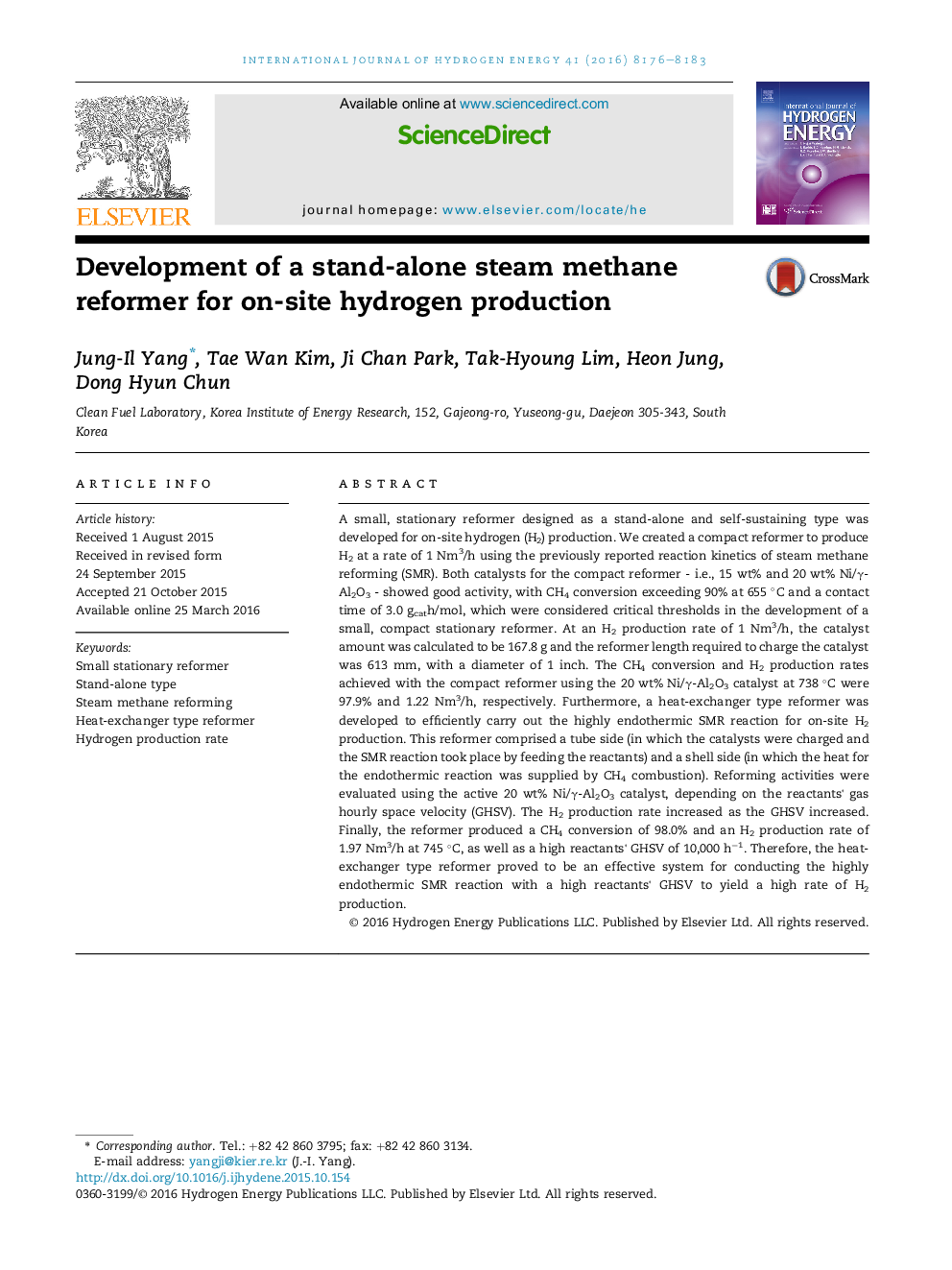| Article ID | Journal | Published Year | Pages | File Type |
|---|---|---|---|---|
| 1277312 | International Journal of Hydrogen Energy | 2016 | 8 Pages |
•Development of the compact reformer for 1 Nm3/h production rate.•The heat-exchanger type reformer with CH4 combustion as a stand-alone and self-sustaining type for on-site H2 production.•99.7% CH4 conversion and 1.21 Nm3/h H2 production rate obtained by the heat-exchanger type reformer at 798 °C.•The H2 production rate was increased with increasing the reactants' GHSV.
A small, stationary reformer designed as a stand-alone and self-sustaining type was developed for on-site hydrogen (H2) production. We created a compact reformer to produce H2 at a rate of 1 Nm3/h using the previously reported reaction kinetics of steam methane reforming (SMR). Both catalysts for the compact reformer - i.e., 15 wt% and 20 wt% Ni/γ-Al2O3 - showed good activity, with CH4 conversion exceeding 90% at 655 °C and a contact time of 3.0 gcath/mol, which were considered critical thresholds in the development of a small, compact stationary reformer. At an H2 production rate of 1 Nm3/h, the catalyst amount was calculated to be 167.8 g and the reformer length required to charge the catalyst was 613 mm, with a diameter of 1 inch. The CH4 conversion and H2 production rates achieved with the compact reformer using the 20 wt% Ni/γ-Al2O3 catalyst at 738 °C were 97.9% and 1.22 Nm3/h, respectively. Furthermore, a heat-exchanger type reformer was developed to efficiently carry out the highly endothermic SMR reaction for on-site H2 production. This reformer comprised a tube side (in which the catalysts were charged and the SMR reaction took place by feeding the reactants) and a shell side (in which the heat for the endothermic reaction was supplied by CH4 combustion). Reforming activities were evaluated using the active 20 wt% Ni/γ-Al2O3 catalyst, depending on the reactants' gas hourly space velocity (GHSV). The H2 production rate increased as the GHSV increased. Finally, the reformer produced a CH4 conversion of 98.0% and an H2 production rate of 1.97 Nm3/h at 745 °C, as well as a high reactants' GHSV of 10,000 h−1. Therefore, the heat-exchanger type reformer proved to be an effective system for conducting the highly endothermic SMR reaction with a high reactants' GHSV to yield a high rate of H2 production.
Graphical abstractFigure optionsDownload full-size imageDownload as PowerPoint slide
